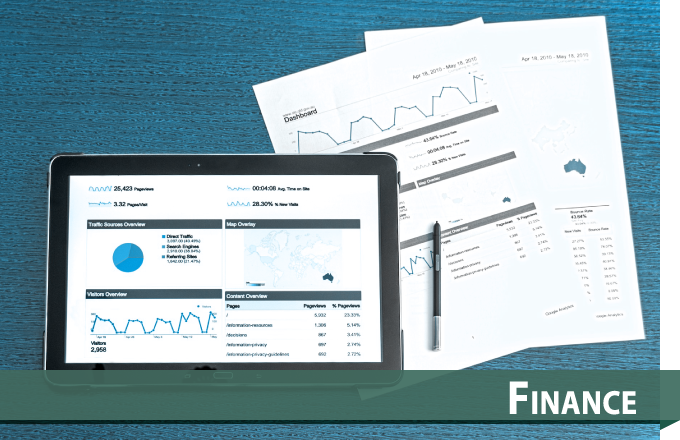Using brokerage mergers and closures as natural experiments, we examine how exogenous changes in the information environment affect a firm’s financing choice. Our difference-in-differences approach shows that exogenous increases in information asymmetry lead firms to substitute away from equity and public debt toward bank debt. Firms with higher risk tend to substitute equity for bank debt, and firms with lower risk tend to substitute bonds for bank debt. The effect of the change in the information environment on a firm’s financing choice is more pronounced for firms with worse information environments, such as those with few initial analysts and younger firms. We demonstrate that the mechanism of the change is through a reduction of the issuance of equity and bonds but with an increase of the issuance of bank loans. Further analysis reveals that such firms tend to reduce long-term borrowing, reduce their issuance of subordinated debt, and increase their revolving credit lines.
December 2019
Management Science
We analyze the design and performance of equity auctions when bidder's valuations and opportunity costs are private information, distributed according to an arbitrary joint density that can differ across bidders. We identify, for any incentive compatible mechanism, an equivalent single-dimensional representation for uncertainty. We then characterize the revenue-maximizing and surplus-maximizing equity mechanisms, and compare revenues in optimal equity and cash auctions. Unlike in cash auctions, the adverse selection arising from bidders' two-dimensional types in equity auctions can lead to a global violation of the regularity condition, which represents a maximal mismatch between incentive compatibility and maximization of revenue or surplus. Such mismatch can lead a seller to exclude bidders and demand a bidder-specific stake from a non-excluded bidder, providing insights into when a firm should employ an auction and when it should just negotiate with a single bidder.
November 2019
Journal of Economic Theory
The rise of credit default swaps (CDS) provides creditors with a market-based approach to obtaining protection, but it can also affect lenders' monitoring of the borrowers. We find that after CDS begin trading on a given firm, new loans to that firm are less likely to require collateral and have less strict financial covenants, even controlling for endogeneity. The effects are stronger when lenders have easier access to CDS, for safer firms, credit lines, and performance-based covenants. Our evidence is consistent with the theory that the introduction of CDS trading makes loan contracting more effective for better quality borrowers.
November 2019
Journal of Accounting and Economics
We provide a meta-analytic examination of the regulatory strategies that employees adopt to cope with different types of stressors in the workplace and how these strategies are linked to work and personal outcomes. Drawing from regulatory focus theory, we introduce a new taxonomy of promotion- and prevention-focused coping that complements the traditional taxonomy of problem- and emotion-focused coping in the transactional theory of stress. In addition, we propose that challenge stressors tend to evoke promotion-focused coping, whereas hindrance stressors tend to evoke prevention-focused coping. As a pair of important coping mechanisms in the work stress process, promotion-focused coping is positively related to employees’ job performance, job attitudes, and personal well-being, whereas prevention-focused coping is negatively related to these outcomes. We conducted an original meta-analysis of coping strategies in the workplace and tested the hypotheses with 550 effect sizes drawn from 156 samples that involved a total of 75,344 employees. We also tested the tenability of the proposed stressor-coping-outcome processes using meta-analytic path models and further examined the robustness of these models using full-information bootstrapping technique. The results converge to show that promotion- and prevention-focused coping serve as important intervening mechanisms that account for the relationships between work stressors and individual outcomes.
October 2019
Journal of Applied Psychology
The Dodd-Frank Act shifted regulatory jurisdiction over “midsize” investment advisers from the SEC to state-securities regulators. Client complaints against midsize advisers increased relative to those continuing under SEC oversight by 30 to 40 percent of the unconditional probability. Complaints increasingly cited fiduciary violations and rose more where state regulators had fewer resources. Advisers responding more to weaker oversight had past complaints, were located farther from regulators, faced less competition, had more conflicts of interest, and served primarily less-sophisticated clients. Our results inform optimal regulatory design in markets with informational asymmetries and search frictions.
October 2019
American Economic Review
Drawing on self-enhancement theory, we propose that, intraindividually, employees tend to give themselves credit when they engage in creativity. Perceived creative credit, in turn, activates multiple psychological motives that ultimately affect deviance. On the one hand, perceived creative credit is associated with greater creativity-driven norm-breaking motives and greater entitlement motives, which in turn should increase deviance. On the other hand, perceived creative credit is associated with greater image preservation motives, which in turn should decrease deviance. A within-person study involving 206 employees and their coworkers conducted over a 10-day period provided broad support for the proposed model. In addition, a between-person variable, namely rewards for creativity, moderated the self-crediting process. The within-person serial mediation relationship between creativity and deviance was positive and significant for employees who perceived low rewards for creativity, but was not significant for those who perceived high rewards for creativity. In other words, rewards for creativity in the workplace effectively nullified this within-person self-crediting mechanism among employees. This study thus illustrates that, within individuals, creativity and deviance are related through perceived creative credit and different psychological motives (i.e., serial mediation). However, the strength of this serial mediation relationship varies depending on the availability of formal rewards for creativity (i.e., moderated serial mediation).
September 2019
Journal of Applied Psychology
Emergency departments (EDs) typically use a triage system to classify patients into priority levels. However, most triage systems do not specify how exactly to route patients across and within the assigned triage levels. Therefore, decision makers in EDs often have to use their own discretion to route patients. Also, how patient waiting is perceived and accounted for in ED operations is not clearly understood. In this paper, using patient-level ED visit data, we structurally estimate the waiting cost structure of ED patients as perceived by the decision makers who make ED patient routing decisions. We derive policy implications and make suggestions for improving triage systems. We analyze the patient routing behaviors of ED decision makers in four EDs in the metro Vancouver, British Columbia, area. They all use the Canadian Triage and Acuity Scale, which has a wait time–related target service level objective. We propose a general discrete choice framework, consistent with queueing literature, as a tool to analyze prioritization behaviors in multiclass queues under mild assumptions. We find that the decision makers in all four EDs (1) apply a delay-dependent prioritization across different triage levels; (2) have a perceived marginal ED patient waiting cost that is best fit by a piece-wise linear concave function in wait time; (3) generally follow, in the same triage level, the first-come first-served principle, but their adherence to the principle decreases for patients who wait past a certain threshold; and (4) do not use patient complexity as a major criterion in prioritization decisions.
September 2019
Manufacturing & Service Operations Management
User-generated content (UGC) is increasingly used in the marketing communication mix for promoting products. This research investigates how firms can actively manage consumer-generated reviews in the form of highlighting authentic reviews at firms’ discretion. Whereas highlighting a positive review is expected to lead to positive product evaluations, this practice may elicit consumers’ skepticism if consumers are explicitly informed of the promotional intent of the firm. In three studies, we examine the effect of presenting a firm-highlighted review on consumers’ consumption intention and behavior. Our findings confirm that highlighting a positive consumer review can effectively attract consumers’ attention to this review. However, the heightened attention does not always lead to higher consumption likelihood. In particular, the extremity of a highlighted review will interact with the variance of the review context as well as the reputation of the firm being reviewed to determine the effect of the firm-highlighting practice on consumers’ consumption behavior. When other reviews convey mixed opinions or when the firm has not established a strong reputation, highlighting a positive but less extreme review may effectively improve the likelihood of consumption, but highlighting a review that is extremely positive will not.
September 2019
Information Systems Research
This paper documents that changes in litigation risk affect corporate voluntary disclosure practices. We make causal inferences by exploiting three legal events that generate exogenous variations in firms' litigation risk. Using a matching-based fixed-effect difference-in-differences design, we find that the treated firms tend to make fewer (more) management earnings forecasts relative to the control firms when they expect litigation risk to be lower (higher) following the legal event. The results are concentrated on the earnings forecasts conveying negative news and are robust to alternative specifications, samples, and outcome variables.
September 2019
The Accounting Review
























